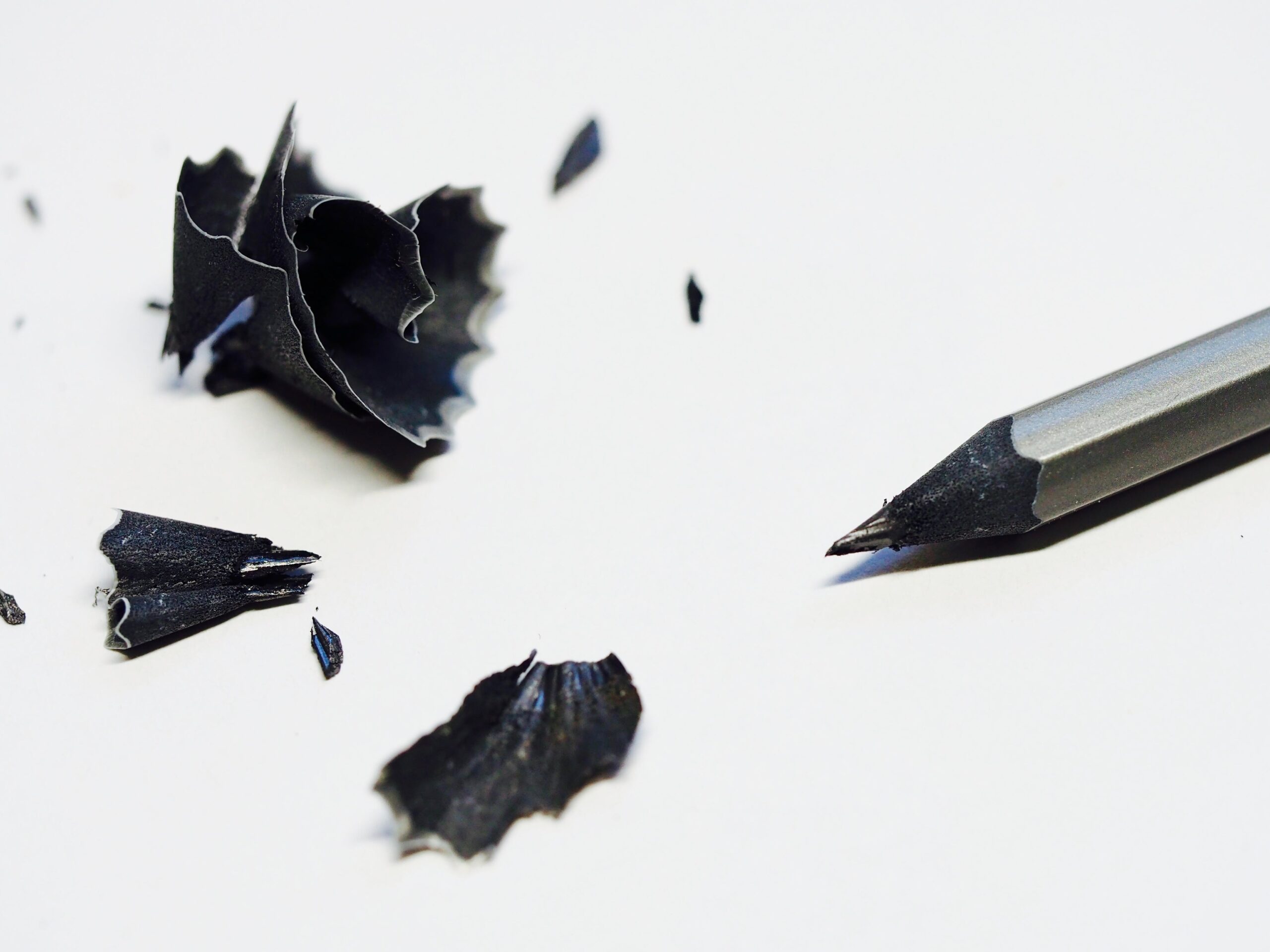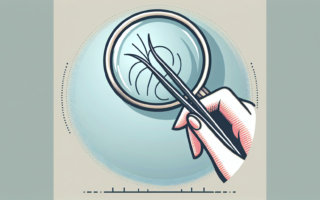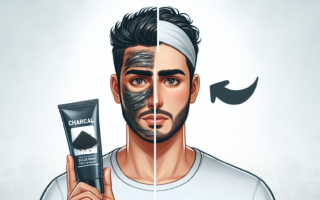Have you ever wondered why your boyfriend has a specific technique for shaving? Well, it turns out that there’s a method behind his shaving madness. From using a brush to lathering up his face, to carefully selecting the right blades, your boyfriend’s shaving routine goes beyond just a quick swipe with a razor. In this article, we’ll explore the reasons behind his meticulous approach to shaving and uncover the benefits it provides for his skin. So sit back, relax, and get ready to uncover the secrets of your boyfriend’s shaving technique.

Understanding the Importance of Shaving Techniques
The significance of proper shaving technique
Proper shaving technique goes beyond just removing unwanted facial or body hair. It plays a crucial role in achieving a smooth and irritation-free shave. By understanding and implementing the right shaving techniques, you can effectively minimize the risk of nicks, cuts, razor burn, and ingrown hairs. Additionally, using the correct shaving techniques can also improve the overall health and appearance of your skin.
How shaving techniques affect the skin
The way you shave can have a significant impact on the health and condition of your skin. Shaving incorrectly or using improper techniques can lead to various skin problems such as irritation, redness, dryness, and even acne breakouts. On the other hand, employing the right shaving techniques can help maintain the skin’s moisture balance, reduce inflammation, and promote a smoother complexion.
Different techniques for different skin types
Not all shaving techniques work equally well for everyone. Different individuals have varying skin types, each with its own unique needs and sensitivities. It is important to consider your skin type when choosing a shaving technique. For example, individuals with sensitive skin may benefit from using gentler shaving techniques, while those with oily skin might require specific methods to prevent clogged pores. Understanding your skin type and customizing your shaving technique accordingly can greatly enhance your overall shaving experience.
Factors Influencing Shaving Technique Preference
Personal preference and comfort
When it comes to shaving techniques, personal preference and comfort play a crucial role in determining the method you choose. Some individuals may prefer the traditional approach of wet shaving with a razor and shaving cream, while others may opt for the convenience of dry shaving with an electric razor. Your comfort level with different techniques will guide your decision on which method to use for your shaving routine.
Previous experiences with different techniques
Previous experiences with different shaving techniques can greatly influence your preference for a particular method. If you have had positive experiences and achieved desirable results with a certain technique, you are more likely to continue using it. Conversely, negative experiences such as skin irritation or discomfort may prompt you to explore alternative shaving techniques. Understanding your past experiences and learning from them can help you choose the most suitable technique for your shaving needs.
Influence of grooming trends and societal norms
Grooming trends and societal norms can also play a significant role in shaping your shaving technique preference. Influenced by fashion, media, and cultural shifts, grooming trends often dictate the appearance and style of facial hair. As a result, individuals may adopt specific shaving techniques to achieve the desired look in line with prevailing trends. Moreover, societal norms and expectations surrounding grooming can influence the technique you choose, as conformity to these standards is often valued.
The Role of Razor Type in Shaving Technique
Different types of razors available
When it comes to shaving techniques, the choice of razor type is crucial. There are various types of razors available on the market, each offering unique benefits and shaving experiences. Traditional safety razors, cartridge razors, disposable razors, and electric razors are just a few examples. Understanding the differences between these razors and how they affect the shaving technique can help you make an informed decision regarding which razor type suits your needs best.
Effect of razor type on shaving technique
The type of razor you choose can significantly impact your shaving technique. For instance, safety razors with a single blade require a different approach compared to cartridge razors with multiple blades. The weight, angle, and maneuverability of different razor types can also influence the shaving experience. By selecting the appropriate razor type, you can better control the pressure applied during shaving, leading to a smoother and more comfortable shave.
The impact of razor blade quality on technique choice
In addition to razor type, the quality of razor blades also plays a vital role in determining the shaving technique. Dull or low-quality blades can cause tugging, pulling, and increased friction on the skin, leading to irritation and discomfort. On the other hand, sharp and high-quality blades provide a smoother glide and reduce the risk of skin irritation. Understanding the importance of razor blade quality can influence your technique choice and contribute to a more pleasant shaving experience.
Understanding Facial Hair Growth Patterns
Impact of hair growth patterns on shaving
Facial hair growth patterns vary from person to person. Understanding your hair growth patterns is crucial to achieving an effective and close shave. Shaving against the direction of hair growth, also known as shaving “against the grain,” can provide a smoother finish. However, it can also increase the risk of skin irritation and ingrown hairs. Shaving with the grain, on the other hand, is generally gentler on the skin but may result in a less close shave. By understanding your hair growth patterns, you can adapt your shaving technique accordingly for optimal results.
Techniques for shaving with or against the grain
Shaving with or against the grain requires different techniques. When shaving with the grain, it is important to use light, gentle strokes to prevent irritation. Shaving against the grain requires a more careful approach, as applying too much pressure can lead to skin irritation and increased likelihood of ingrown hairs. Experimenting with different techniques and finding the right balance between shaving with or against the grain can help achieve the desired level of closeness while minimizing potential skin issues.
Preventing ingrown hairs and razor bumps
Ingrown hairs and razor bumps are common concerns when shaving. These occur when hair curls back and grows into the skin or when hair follicles become inflamed due to shaving. To prevent ingrown hairs and razor bumps, it is essential to prepare the skin properly before shaving by exfoliating and moisturizing. Adopting proper shaving techniques, such as using sharp blades, avoiding excessive pressure, and following a consistent shaving routine, can also help reduce the risk of these unwanted skin conditions.

Sensitive Skin and Shaving Techniques
Challenges faced by individuals with sensitive skin
Individuals with sensitive skin often face specific challenges when it comes to shaving. Sensitive skin is more prone to irritation, redness, and razor burn. The wrong shaving techniques or products can exacerbate these issues, leaving the skin feeling uncomfortable and inflamed. It is important to identify and understand your skin’s sensitivities to tailor your shaving technique and choose suitable products that minimize irritation and promote skin health.
Techniques to minimize irritation and redness
There are several techniques you can employ to minimize irritation and redness when shaving with sensitive skin. Using a shaving cream or gel specifically formulated for sensitive skin can reduce friction and provide a protective barrier. Shaving in the direction of hair growth or using a less aggressive cutting technique can also help prevent irritation. Additionally, avoiding excessive pressure and regularly moisturizing the skin can further minimize the risk of sensitivity-related issues.
Importance of using suitable shaving products
Using suitable shaving products is crucial for individuals with sensitive skin. Opting for products that are free from harsh chemicals, fragrances, and irritants can help minimize the risk of allergic reactions and skin irritation. Additionally, choosing a shaving cream or gel that provides ample lubrication and hydration can contribute to a smoother and more comfortable shave. It is important to read product labels carefully and select those that are specifically designed for sensitive skin to ensure optimal results.
Cultural and Ethnic Influences on Shaving Techniques
Different cultural norms around shaving
Shaving techniques can vary across different cultures based on grooming traditions and societal norms. In some cultures, men may be expected to have a clean-shaven face, while in others, facial hair is considered a symbol of masculinity and maturity. These cultural expectations influence the shaving techniques individuals adopt. Understanding and respecting cultural norms can play a part in shaping personal shaving habits and techniques.
Ethnic differences in hair texture and growth
Hair texture and growth patterns can vary among different ethnicities. Coarser, curlier hair is more common in certain ethnic groups, which can pose unique challenges during shaving. Individuals with such hair types may require specific techniques and products to effectively remove facial or body hair without causing irritation or discomfort. Recognizing ethnic differences in hair texture and growth is essential in developing shaving techniques that cater to different needs.
Specific techniques for different ethnicities
Different ethnicities may benefit from specific shaving techniques tailored to their unique hair types and skin sensitivities. For example, individuals with coarse or curly facial hair might find that using a pre-shave oil or conditioner helps to soften the hair and provide a smoother glide of the razor. Experimenting with different techniques and products can help individuals of diverse ethnic backgrounds identify the most effective and comfortable shaving methods for their specific needs.

Mastering the Art of Wet Shaving
Benefits of wet shaving over dry shaving
Wet shaving, which involves using water and shaving cream or gel, offers several benefits over dry shaving. Firstly, wet shaving helps to soften the hair and open up the pores, allowing for a closer and more comfortable shave. The use of warm water and moisturizing shaving products also helps to hydrate the skin and reduce the risk of irritation. Additionally, the act of manually shaving with a razor provides a level of control and precision that can result in a smoother finish.
Step-by-step guide to achieving a close shave
To master the art of wet shaving, follow these steps for a close and effective shave:
-
Preparation: Start by washing your face with warm water to soften the hair and open up the pores. This can be done by splashing your face with water or taking a warm shower before shaving.
-
Apply shaving cream or gel: Use a high-quality shaving cream or gel that suits your skin type. Apply a thin, even layer to the areas you intend to shave.
-
Shave with the grain: Start shaving with the direction of hair growth using gentle, short strokes. Rinse the razor frequently to prevent clogging.
-
Rinse and reapply: Rinse your face with warm water to remove any leftover shaving cream or gel. If necessary, reapply a small amount to areas that need a closer shave.
-
Shave against the grain (optional): For an even closer shave, you can choose to shave against the direction of hair growth. Exercise caution and use light strokes to minimize the risk of irritation.
-
Rinse and moisturize: Once you have finished shaving, rinse your face thoroughly with cool water to close the pores. Pat your face dry and apply a moisturizer suitable for your skin type to keep it hydrated.
By following these steps, you can effectively achieve a close shave while minimizing the risk of skin irritation and discomfort.
Choosing the right shaving cream and brush
When it comes to wet shaving, choosing the right shaving cream and brush is essential. The quality of shaving cream greatly affects the lubrication and protection it provides during the shave. Look for creams that are rich in moisturizing ingredients and free from harsh chemicals.
Additionally, using a shaving brush can enhance the shaving experience. A good-quality brush helps create a rich lather, exfoliates the skin, and lifts the hair for a closer shave. Natural bristle brushes, such as those made from boar or badger hair, are often preferred for their softness and ability to retain water for optimal lather production.
Dry Shaving Techniques for Convenience
Advantages and limitations of dry shaving
Dry shaving, which involves using an electric razor or trimmer without water or shaving cream, offers several advantages and limitations. Dry shaving is quick, convenient, and can be done on-the-go without the need for water or additional products. It is also less likely to cause skin irritation or cuts since the razor does not come into direct contact with the skin. However, dry shaving may not provide as close of a shave as wet shaving, and it might not offer the same level of smoothness or precision.
Tips for achieving a smooth shave without water
While dry shaving may not provide the closeness of a wet shave, there are a few tips to help achieve a smoother result:
-
Prepare the skin: Prior to dry shaving, make sure your skin is clean and dry. Removing any oils or dirt will improve the glide and effectiveness of the razor.
-
Use a pre-shave lotion or powder: Applying a pre-shave lotion or powder can help soften the hair and protect the skin during dry shaving. These products create a barrier between the razor and the skin, reducing friction and irritation.
-
Shave in the right direction: When using an electric razor, shave in the direction of hair growth to minimize the risk of irritation and ingrown hairs. Be sure to move the razor slowly and evenly across the skin, allowing it to capture and cut the hair effectively.
-
Regularly clean and maintain the razor: Keep your electric razor clean by brushing away any hair or debris that may accumulate between the blades or foils. Regularly changing the blades or heads will also ensure optimal performance and a smoother shave.
By following these tips, you can maximize the effectiveness of dry shaving and achieve a smooth finish.
Using electric razors for dry shaving
Electric razors are specifically designed for dry shaving and offer convenience and flexibility. They come in both foil and rotary designs, each with its own advantages. Foil razors have straight heads with oscillating blades beneath a foil, providing a more precise shave. Rotary razors have three or more spinning heads that flex and contour to the face, allowing for greater adaptability on uneven surfaces. Choosing the right electric razor that aligns with your preferences and needs is key to achieving a comfortable and effective dry shave.

Shaving Techniques for Different Body Parts
Adapting techniques for various body areas
While facial shaving techniques are often the most discussed, there are other body parts that may require different approaches. Areas such as the neck, chest, back, underarms, and legs all have unique contours and hair growth patterns. Adapting your shaving techniques to suit these specific body parts can help you achieve optimal results while minimizing discomfort and potential skin issues. Understanding and exploring the specific needs of different body areas can greatly enhance your overall shaving experience.
Shaving delicate areas like the neck and jawline
Shaving delicate areas like the neck and jawline requires extra care and precision. The skin in these areas is often more sensitive and prone to irritation. Using short, light strokes and shaving in the direction of hair growth can help minimize the risk of ingrown hairs and razor burn. Additionally, regularly moisturizing the skin and applying a suitable aftershave product can further soothe and protect these delicate areas after shaving.
Preventing razor burn and nicks on sensitive body parts
Sensitive body parts, such as the underarms and bikini area, require special attention to prevent razor burn and nicks. These areas often have thinner and more delicate skin, making them more susceptible to irritation and ingrown hairs. To minimize the risk, it is important to use a sharp and clean razor, apply a lubricating shaving cream or gel, and shave in the direction of hair growth. Taking your time and being gentle during the shaving process can go a long way in preventing discomfort and achieving a smooth result.
The Impact of Technological Innovations in Shaving
Introduction of multi-blade razors
Technological innovations in shaving have led to the introduction of multi-blade razors, which have become increasingly popular. These razors feature multiple blades positioned closely together, aiming to provide a closer and more comfortable shave. The idea behind multi-blade razors is that each subsequent blade cuts progressively closer to the skin, resulting in a smoother finish. While these razors can be effective for some individuals, others may find them less suitable due to potential increased irritation or clogging of the blades.
Electric and battery-powered shaving devices
Electric and battery-powered shaving devices have revolutionized the way people approach shaving. These devices offer convenience, efficiency, and ease of use, making them a popular choice for many individuals. Electric razors and trimmers are versatile and can be used for both dry and wet shaving, allowing users to tailor their shaving technique according to their preferences. Battery-powered devices, such as disposable razors, provide an affordable and portable option for those on the go.
The future of shaving techniques with technology
As technology continues to advance, the future of shaving techniques holds great potential. Innovations such as laser hair removal and advanced grooming devices may revolutionize the way we approach shaving and hair removal. These advancements aim to provide longer-term solutions for reducing unwanted hair while minimizing potential side effects. Additionally, improvements in razor blade design and quality, as well as the development of shaving products specifically tailored to individual needs, are likely to enhance the overall shaving experience in the future.
In conclusion, understanding the importance of shaving techniques is key to achieving a smooth and comfortable shave. Factors such as personal preference, previous experiences, and cultural influences can all shape the shaving technique you choose. Razor type, hair growth patterns, and skin sensitivity are also crucial factors to consider when determining the most suitable shaving techniques. By mastering the art of wet or dry shaving, adapting techniques for different body parts, and keeping up with technological advancements, you can enjoy a personalized and effective shaving experience that enhances the health and appearance of your skin.



